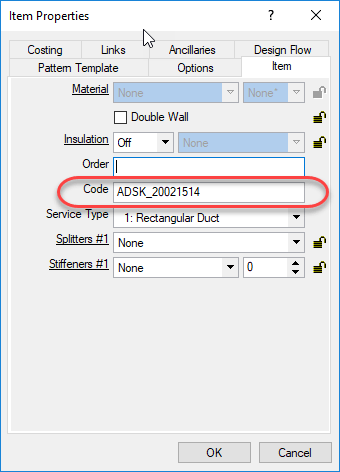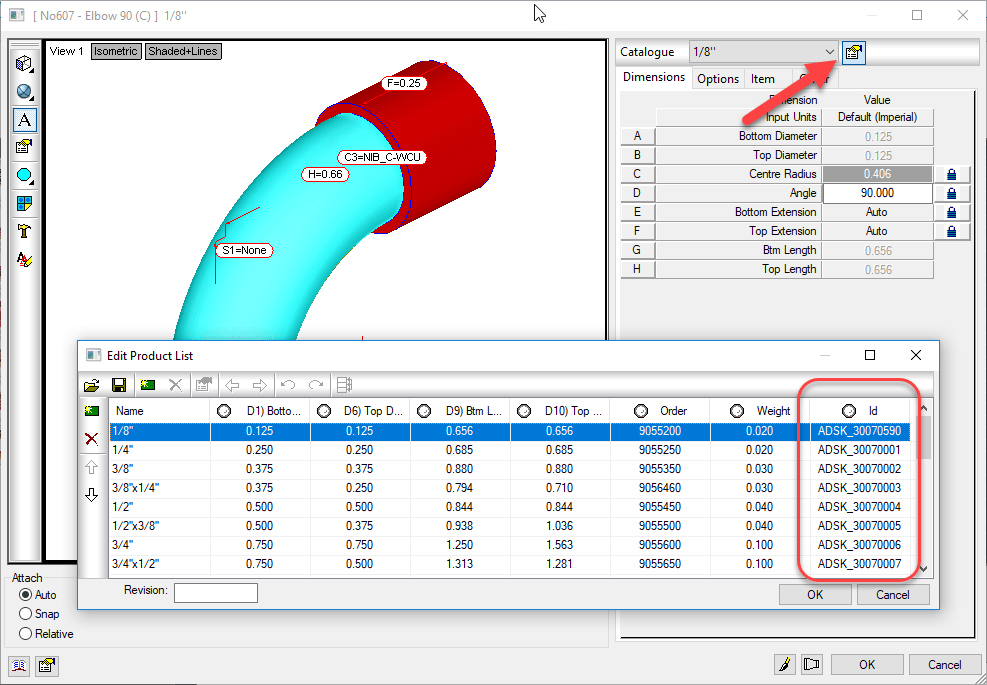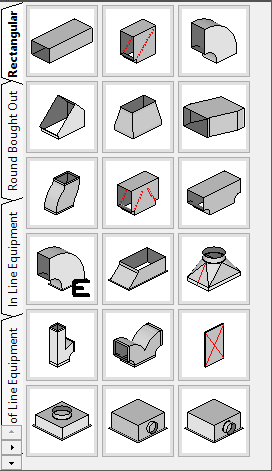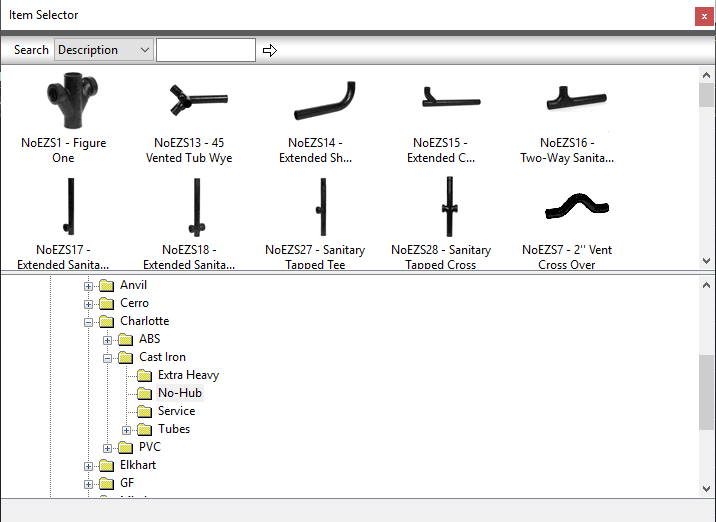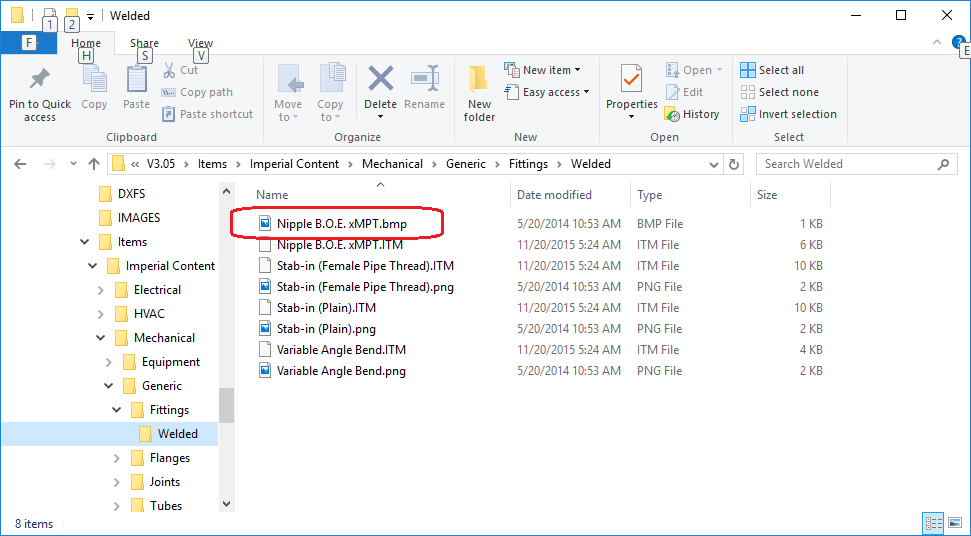Autodesk Fabrication: Best Practice #5
Don’t Store Estimating Tables in Your CADmep Drawing
If your company uses ESTmep, pay close attention. CADmep stores in the DWG files most of your database with the exception of content that’s not used and reports. What this also means is that by DEFAULT, CADmep stores your Estimating Tables in every Drawing file (DWG) you produce. Most companies using ESTmep use 1.0 Factors for SMACNA, MCAA or other trade labor so exposing that data isn’t as big of a risk…everybody knows what it is. However, if you have pricing multipliers for your vendors, negotiated prices (as opposed to List Pricing) in your tables or have your own custom labor factors and rates, anyone with access to CADmep and your drawing files can EASILY extract that information from your DWG files,
This is easily changed by toggling the “Do NOT Store Est Tables with DWG Database” setting in the Edit Configuration utility as shown on the following image.
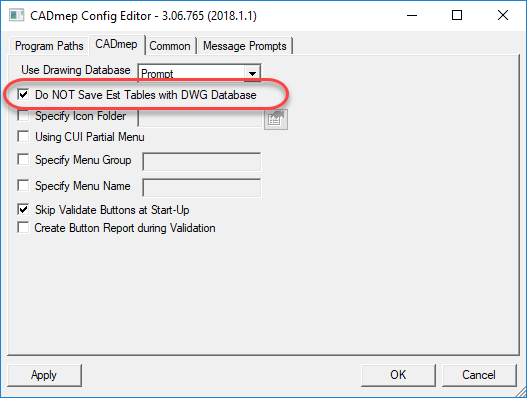 ,
,
Setting this toggles will prevent CADmep from caching a copy of the Price Tables, Install Tables and Fabrication Tables in your drawing file, These are a few other things to note…
- While this settings prompts you for which configuration to load (if you have more than one), the setting is not configuration specific. Meaning, it is not stored in your Fabrication Database. The setting applies to ALL configurations so you can pick any one you like to make this change.
- This change is software VERSION specific. For example, if you run 20017 and 2018 versions of CADmep, you need to make the change in both versions.
- This issue is NOT present when using Revit with Fabrication Parts. Only CADmep has this issue,
- Because this setting isn’t stored in the database, that means it’s computer specific. You need to change it on each computer running CADmep.
- This setting is also USER specific (stored in your Windows profile) so even if you change if for one user, if a different user logs in on the same computer, you’ll need to make the change again.
Because this setting is user specific and computer specific…and because the default setting if you do nothing is the RISKY option, it’s easy for this setting to revert back to it’s original value and save the Estimating Tables to the drawing. For this reason, you many want to consider creating an AutoLISP routine that sets this setting every time you start AutoCAD. You could also have it run from a Batch File or VBScript in the Windows Startup folder each time you log onto Windows or even have your IT Department force the setting via Group Policy or other methods. For any of these solutions, it’s as simple as automating the setting in the following Registry Key.
Key: HKEY_CURRENT_USER\Software\Autodesk\Fabrication 2018\CADmep Value: StoreEstDatabase Type: REG_SZ Data: FALSE
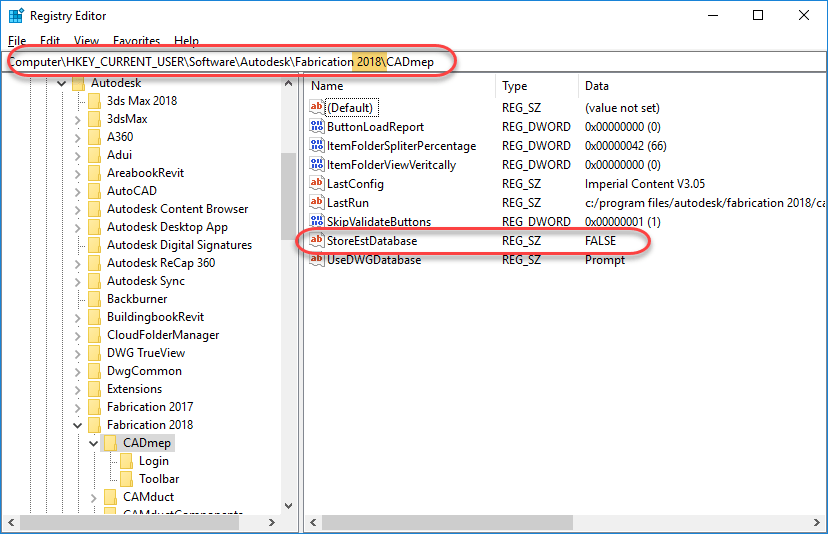
If you’re interested in a sample LSP, Batch File and/or VBScript to set this, drop me an Email at Dyoung@Mcwi.Com.
